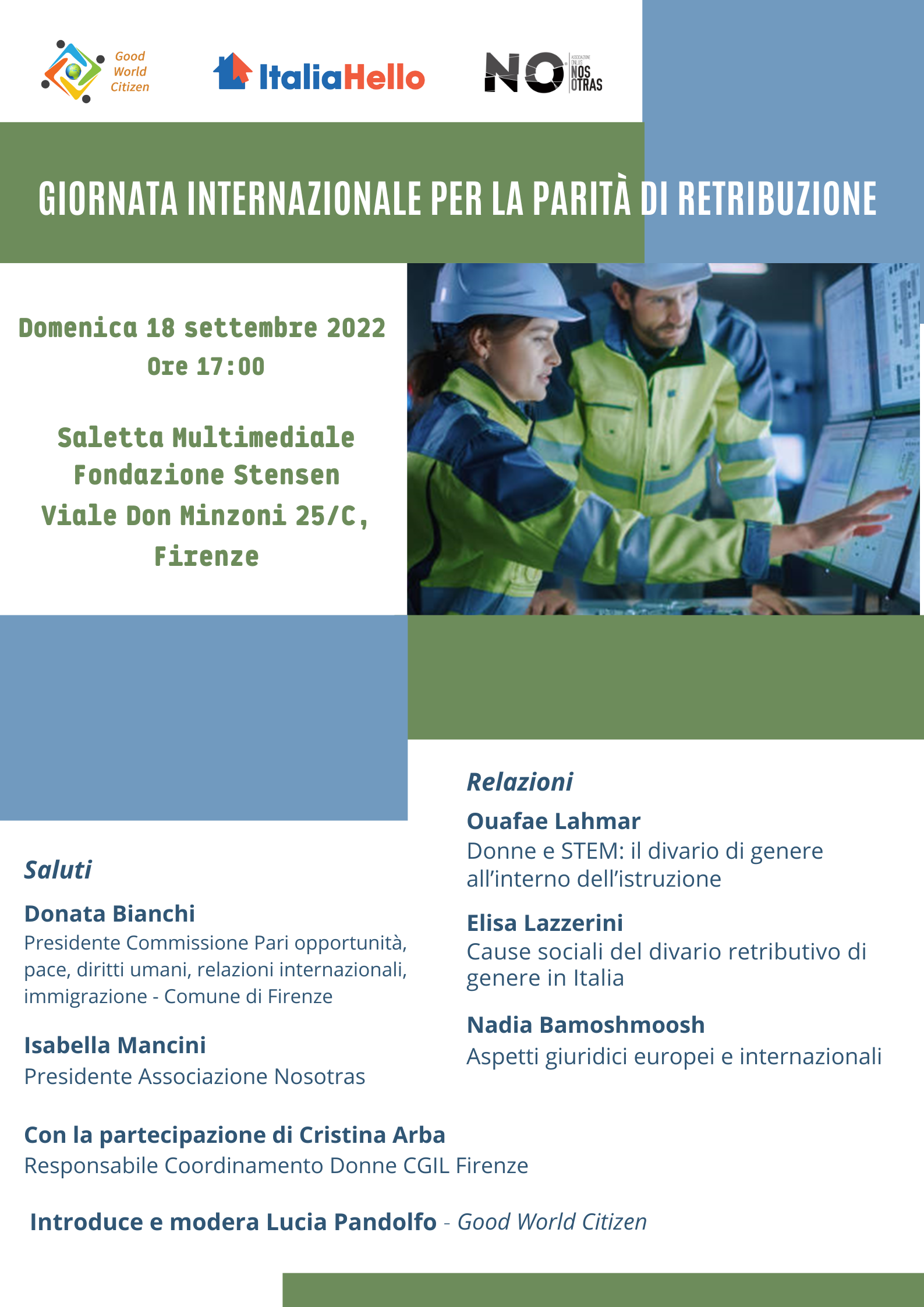Despite constituting half of the world’s population, women have always suffered, and unfortunately continue to suffer, discrimination of various kinds: from the denial of the right to vote until a few decades ago, to the consideration of women only as the “angels of the house”, up to the the many forms of penalization and marginalization of women in the work market. In substance, unlike men, women have to fight harder for the application of their rights.
A classic example of discrimination against women concerns the pay gap that exists in the world of work. According to the most recent UN statistics, worldwide the so-called GPG (gender pay gap) amounts to around 23%. Essentially, for every dollar that a man makes, a woman earns only 77 cents. This would theoretically mean that for each calendar year, a woman would stop getting paid around October 9th, considering that the following days would be unpaid, unlike her male colleagues.
The issue of equal pay has been the subject of debate for several decades. As soon as the international community started talking about the importance of human rights (around the middle of last century), one of the first topics addressed was indeed the principle of equal pay for equal value of work between men and women. Every hour of work of a man must be paid equally to the hour of work of the same value of a woman: for example, two science teachers, one a man and the other a woman, must be paid exactly the same.
In 1951, the International Labor Organization, a specialized agency of the United Nations dedicated to promoting social justice and internationally recognized human rights, adopted the Equal Remuneration Convention. To date, this convention has been ratified by 174 countries, the vast majority of member states of the United Nations. In the following years, the International Labor Organization undertook to adopt similar conventions to protect the rights of working women and their rights, also in terms of remuneration.
Coming to the European context, the principle of equal pay was immediately tackled in the first founding treaty of the institution that what would later become the European Union, the famous Treaty of Rome, adopted in 1957. In this case, the article dealing with the principle of equal pay in the Treaty of Rome, article 119, had not been adopted in view of the emancipation of the rights of women. In fact, the ultimate goal of this article was to avoid unfair competition between the States of the then European Economic Community: if a country had provided for a lower remuneration of women than for men, a situation of economic abuse and unfair advantage would certainly have been created.
Despite that, over the years the various bodies of the European institutions and the governments of the member States of the European Community undertook to guarantee women a fair and just salary compared to their male colleagues, in the spirit of the social promotion of the women themselves and beyond any economic issue.
But even in the European context, when reading the most recent data on wage inequalities, we can note that in European countries, which are among the most advanced and democratic States in the world, the gender pay gap is around 14%. This is a number which, although it is certainly better than the world average on GPG, is still disappointing.
Women are a fundamental and irreplaceable part of the work market both at the European and international level. Why are they still being paid less than men? And why is the progress made over the last seventy years not satisfying, despite the fact that there are treaties and laws that prohibit the existence of GPG and despite the common sentiment agreeing on the moral obligation to guarantee equal pay for men and women?
These questions are extremely complex and involve so many considerations that would fill hundreds of thousands of pages of books. However, it is important to bear in mind at least that at the basis of this wage inequality lies a systemic ideology of a patriarchal society which still believes that women have a lower value than men. Unfortunately, this thought produces cascading negative effects that end up pushing women in the job world into a vicious circle from which they cannot get out.
On the one hand, women are indirectly relegated to certain jobs without having access to others: nurses, primary school teachers, cashiers, pediatricians and, more rarely, laboratory technicians, university professors, managing directors or orthopedics of important companies. These latter professions end up being a “closed” circle in which women find have more difficulty in accessing and where their needs, for example maternity leave issues, are less understood. On the other hand, given this division between “jobs for men” and “jobs for women”, the former jobs are more favored in economic terms. Therefore, even if an elementary school teacher has an extremely important educational task of the same impact as a university professor, she is significantly paid less.
So, what shall we do then? It is surely essential to understand that the goal of equal pay between men and women is still unfortunately extremely far away, and consequently it is good to become aware of this inequity and try to be informed as much as possible about this matter. It is also important that women take part in all decision-making processes in which they can effectively carry out their requests and ask for a more equitable and more just society. This can take place both at higher decision-making level, like national or international parliaments, local and non-local committees, executives of various kinds. But it can also happen through the representation of women in events and projects in favor of the rights of all workers.

On the18th September, which coincides with the international day for equal pay, Good World Citizen invited five women, from different professional and non-professional backgrounds, to speak on the issue by addressing the debate from various points of view. Hoping that in the future the fight for wage justice will be a distant memory, we hope that the efforts made by women and men for a more just world will start bearing fruit extremely soon.

